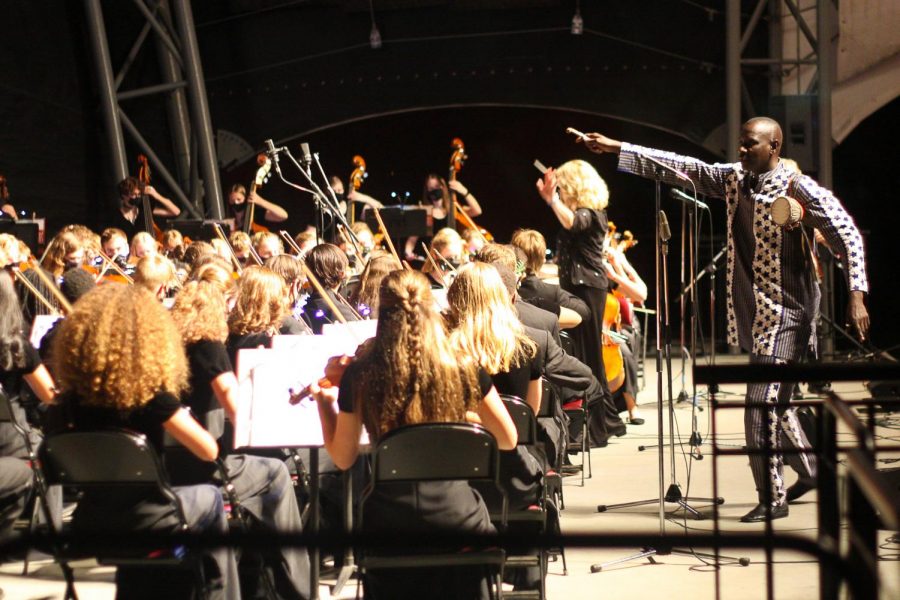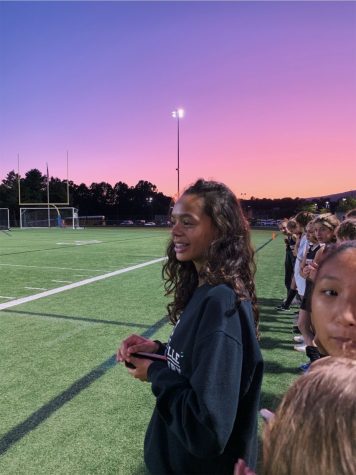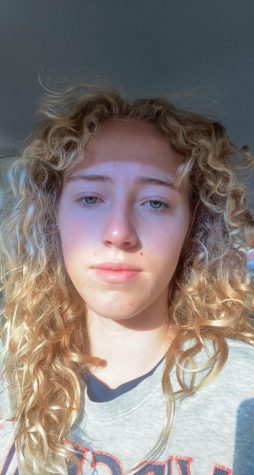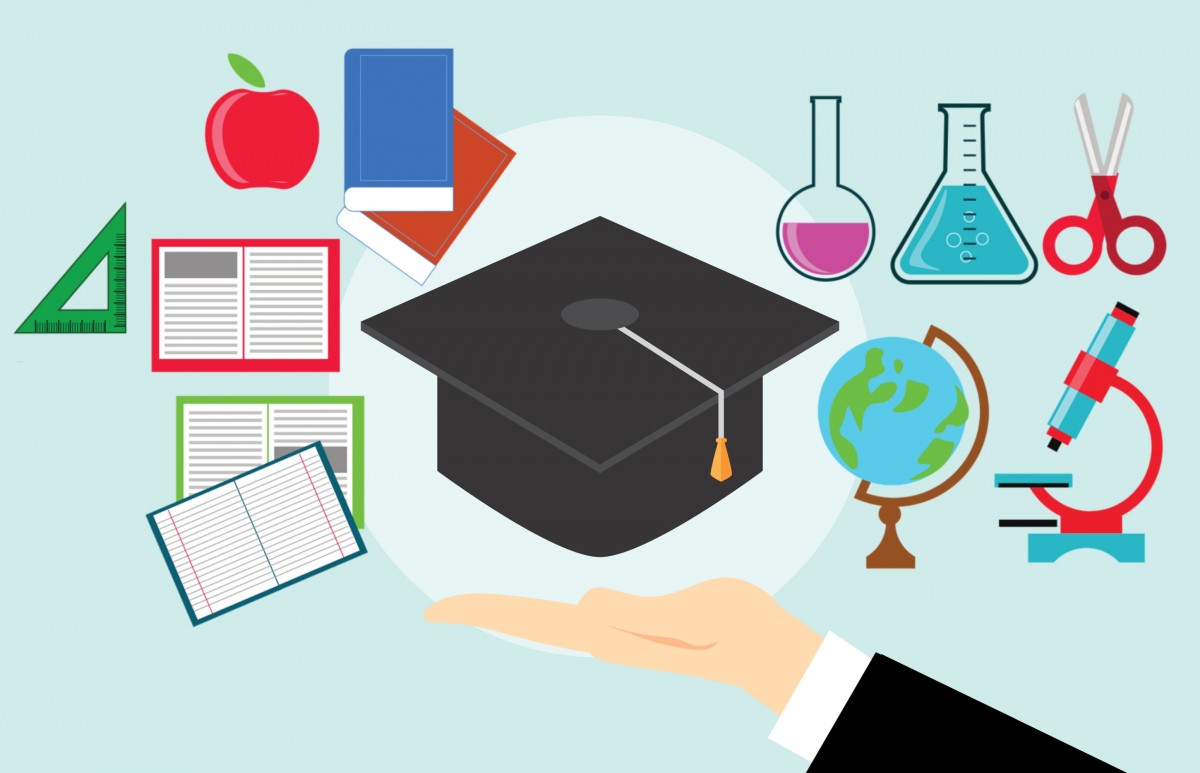Arts and Mental Health
October 26, 2021
The GT wing has been thought of as a haven for many CHS students. Students are welcomed by Mr. Cooke’s happy voice as they enter classrooms filled with artwork, music, and warmth. High school can be a stressful and confusing time for many students, and having a space dedicated to letting students explore and create things they are passionate about is truly a wonderful thing.
The arts teachers at CHS are very aware of the power their subjects have, and their also aware of the power they as teachers have to curate a safe and inclusive environment. The teachers do this in two ways. Just the general aesthetic of the classes in this wing are very colorful, happy and honestly quite beautiful. “When I come in every August I reinvent how the room will look. I hate going into classrooms where the walls are just not empty, there is no color, it hurts my spirit. I need color and simulation. So it’s important for me that the room emulates a good vibe, hence the disco balls this year”,said Ms. Kett, an art teacher at CHS. So already the external part of the art hallway is being carefully created to make students feel safe and calm But it doesn’t end there, the art teachers also work hard to work on the internal part of each students, shaping their hearts and minds. Ms. Kett continued saying, “I found high school very hard, so I try and keep a lot of the events that happened during high school close to my heart so I can remember how not to be. I think we[humans] are really bad at listening to people and actually hearing what they are saying. I think trust is really important, I always spend a lot of time analyzing what I am doing to see what I can do better. Not messing around with kids- being honest about what is going on. No one likes to be talked down to. So I hope it’s a happy, safe space.
While art and music definitely create a happy atmosphere they actually help our brains grow, and can relieve stress and anxiety. In their book, The Creativity Cure, Alton and Carrie Barron talk about how art can be empowering, “because it’s an expression of self.” The combination of using your motor skills to create a visual piece relieves stress and anxiety. Art can help us focus on the process, instead of the sometimes overwhelming end goal. In a world where we are constantly trying to meet perfection, deadlines, and grades being able to concentrate both your body and mind on a simple yet beautiful task is very stress relieving. Ms. Kett elaborated on this saying, “We are in the left brain mechanical kind of way of being all day long. But when you’re problem solving you also use the right brain. Art is problem solving even if you don’t think about it that way. So I go home and make art every night, especially during the pandemic because it’s freeing. It allows you to get the bad stuff out. It’s almost like a cleanse.”
The effects of the visual and musical arts are vast and numerous. But at the end of the day one of the greatest gifts these classes have given to CHS students is a sense of community. The common thread of art or music has brought together many unique and different students. Ms. Vann, another CHS art teachers discusses this saying, “We also create a community here, hopefully people genuinely get to know each other and form relationships where they care for one another and then they can create art and it can be more of a collaborative process.” In art class you are forced to talk to other students, critique their work, and share your stories. As an art student I have learned so much about myself through the engaging creative part of this class. Because everyday for a whole school year students get to sit and create not only art, byt human connections.
Being in a music classroom in the middle of the day is the perfect break-activity for your brain. You are able to talk with your teachers and friends while also stimulating your brain with beautiful sounds. The music teachers here at CHS make sure that all students, regardless of ability, are welcome to come and learn. “For students that don’t do marching band or have never done band before; its obviously a little difficult. Its a big hurdle to overcome just with ability. Sometimes that makes students feel that they don’t belong, but that is the opposite of what we want. We just try to work with students and try to build peer-to-peer relationships. We have stronger students work with students who have less experience so that they can both improve their musicianship.” says Mr. Hackworth. Ms. Thomas shares that, “CHS Visual and Performing Arts teachers are passionate about and deeply committed to helping every student fulfill their creative, artistic, and musical potential.” These teachers value their connections with students and are willing to help with any problem Music-related or not. As Mr. Cooke says:”They’re here because they want to be, usually, unless their momma made them take it.” Most of the students come to the music classroom with a passion for music that they want to entertain. They’re inspired by their love for the sounds and their hopes to learn more.
“Playing music requires engagement from the entire body–brain, hands, heart, and soul. My students tell me they love orchestra rehearsals because they are a break from sitting at a desk and working on a computer screen. To me, the greatest joy of playing music in an ensemble is the potential to create something together that is beautiful, powerful, exciting, complex, dark, joyful, exquisite, mysterious, or majestic–maybe all in the same rehearsal! We work every day as a team to produce something much greater than the sum of our parts. It’s totally energizing!” says Ms. Thomas. The required engagement is not hard. It is all about personal needs to participate in and listen to the music. If you really love the music, you will want to be a part of it.
When asked if he thinks that music is healing, Mr. Hackworth says: “Of course. I think we see that a lot. Music is cathartic. When you’re really sad, you go listen to music. It is mood altering. If you want to get excited about something, you listen to music. If you’re trying to get people to engage, you turn on some music. Music effects us in so many different ways. The biggest thing we saw was when students were away from it for so long, when they took a year off of it because of COVID, they didn’t have that community and that interaction with music. I saw people when we came back that had changed and struggled because of their lack of that community and music connection.” Music is an extremely important part of life, and many of us wouldn’t be able to imagine our world without it.







